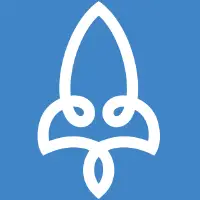Install Asset
Install via Godot
To maintain one source of truth, Godot Asset Library is just a mirror of the old asset library so you can download directly on Godot via the integrated asset library browser

Quick Information

The official open-source Godot client for Nakama server written in GDScript.Nakama is an open-source server designed to power modern games and apps. Features include user accounts, chat, social, matchmaker, realtime multiplayer, and much more.This client implements the full API and socket options with the server. It's written in GDScript to support Godot Engine 3.1+.Full documentation is online - https://heroiclabs.com/docs
Nakama Godot
Godot client for Nakama server written in GDScript.
Nakama is an open-source server designed to power modern games and apps. Features include user accounts, chat, social, matchmaker, realtime multiplayer, and much more.
This client implements the full API and socket options with the server. It's written in GDScript to support Godot Engine 3.1+.
Full documentation is online - https://heroiclabs.com/docs
Godot 3 & 4
You're currently looking at the Godot 3 version of the Nakama client for Godot.
There is an unreleased Godot 4 version you can find in the 'godot-4' branch on GitHub.
Getting Started
You'll need to setup the server and database before you can connect with the client. The simplest way is to use Docker but have a look at the server documentation for other options.
Install and run the servers. Follow these instructions.
Download the client from the releases page and import it into your project. You can also download it from the asset repository.
Add the
Nakama.gdsingleton (inaddons/com.heroiclabs.nakama/) as an autoload in Godot.Use the connection credentials to build a client object using the singleton.
extends Node func _ready(): var scheme = "http" var host = "127.0.0.1" var port = 7350 var server_key = "defaultkey" var client := Nakama.create_client(server_key, host, port, scheme)
Usage
The client object has many methods to execute various features in the server or open realtime socket connections with the server.
Authenticate
There's a variety of ways to authenticate with the server. Authentication can create a user if they don't already exist with those credentials. It's also easy to authenticate with a social profile from Google Play Games, Facebook, Game Center, etc.
var email = "[email protected]"
var password = "batsignal"
# Use yield(client.function(), "completed") to wait for the request to complete.
var session : NakamaSession = yield(client.authenticate_email_async(email, password), "completed")
print(session)
Sessions
When authenticated the server responds with an auth token (JWT) which contains useful properties and gets deserialized into a NakamaSession object.
print(session.token) # raw JWT token
print(session.user_id)
print(session.username)
print("Session has expired: %s" % session.expired)
print("Session expires at: %s" % session.expire_time)
It is recommended to store the auth token from the session and check at startup if it has expired. If the token has expired you must reauthenticate. The expiry time of the token can be changed as a setting in the server.
var authtoken = "restored from somewhere"
var session2 = NakamaClient.restore_session(authtoken)
if session2.expired:
print("Session has expired. Must reauthenticate!")
NOTE: The length of the lifetime of a session can be changed on the server with the --session.token_expiry_sec command flag argument.
Requests
The client includes lots of builtin APIs for various features of the game server. These can be accessed with the async methods. It can also call custom logic in RPC functions on the server. These can also be executed with a socket object.
All requests are sent with a session object which authorizes the client.
var account = yield(client.get_account_async(session), "completed")
print(account.user.id)
print(account.user.username)
print(account.wallet)
Exceptions
Since Godot Engine does not support exceptions, whenever you make an async request via the client or socket, you can check if an error occurred via the is_exception() method.
var an_invalid_session = NakamaSession.new() # An empty session, which will cause and error when we use it.
var account2 = yield(client.get_account_async(an_invalid_session), "completed")
print(account2) # This will print the exception
if account2.is_exception():
print("We got an exception")
Socket
The client can create one or more sockets with the server. Each socket can have it's own event listeners registered for responses received from the server.
var socket = Nakama.create_socket_from(client)
socket.connect("connected", self, "_on_socket_connected")
socket.connect("closed", self, "_on_socket_closed")
socket.connect("received_error", self, "_on_socket_error")
yield(socket.connect_async(session), "completed")
print("Done")
func _on_socket_connected():
print("Socket connected.")
func _on_socket_closed():
print("Socket closed.")
func _on_socket_error(err):
printerr("Socket error %s" % err)
Integration with Godot's High-level Multiplayer API
Godot provides a High-level Multiplayer API, allowing developers to make RPCs, calling functions that run on other peers in a multiplayer match.
For example:
func _process(delta):
if not is_network_master():
return
var input_vector = get_input_vector()
# Move the player locally.
move_and_slide(input_vector * SPEED)
# Then update the player's position on all other connected clients.
rpc('update_remote_position', position)
remote func update_remote_position(new_position):
position = new_position
Godot provides a number of built-in backends for sending the RPCs, including: ENet, WebSockets, and WebRTC.
However, using Godot 3.5.0 or newer, you can also use the Nakama client as a backend! This can allow you to continue using Godot's familiar High-level Multiplayer API, but with the RPCs transparently sent over a realtime Nakama match.
To do that, you need to use the NakamaMultiplayerBridge class:
var multiplayer_bridge
func _ready():
# [...]
# You must have a working 'socket', created as described above.
multiplayer_bridge = NakamaMultiplayerBridge.new(socket)
multiplayer_bridge.connect("match_join_error", self, "_on_match_join_error")
multiplayer_bridge.connect("match_joined", self, "_on_match_joined")
get_tree().set_network_peer(multiplayer_bridge.multiplayer_peer)
func _on_match_join_error(error):
print ("Unable to join match: ", error.message)
func _on_match_join() -> void:
print ("Joined match with id: ", multiplayer_bridge.match_id)
You can also connect to any of the usual signals on SceneTree associated with
the High-level Multiplayer API, for example:
get_tree().connect("network_peer_connected", self, "_on_network_peer_connected")
get_tree().connect("network_peer_disconnected", self, "_on_network_peer_disconnected")
func _on_network_peer_connected(peer_id):
print ("Peer joined match: ", peer_id)
func _on_network_peer_disconnected(peer_id):
print ("Peer left match: ", peer_id)
Then you need to join a match, using one of the following methods:
Create a new private match, with your client as the host.
multiplayer_bridge.create_match()Join a private match.
multiplayer_bridge.join_match(match_id)Create or join a private match with the given name.
multiplayer_bridge.join_named_match(match_name)Use the matchmaker to find and join a public match.
var ticket = yield(socket.add_matchmaker_async(), "completed") if ticket.is_exception(): print ("Error joining matchmaking pool: ", ticket.get_exception().message) return multiplayer_bridge.start_matchmaking(ticket)
After the the "match_joined" signal is emitted, you can start sending RPCs as
usual with the rpc() function, and calling any other functions associated with
the High-level Multiplayer API, such as get_tree().get_network_unique_id() and
node.set_network_master(peer_id) and node.is_network_master().
Mono / C#
If you're using the Mono version of Godot with C# support, you can use the Nakama .NET client, which can be installed via NuGet:
dotnet add package NakamaClient
This addon includes some C# classes for use with the .NET client, to provide deeper integration with Godot:
GodotLogger: A logger which prints to the Godot console.GodotHttpAdapter: An HTTP adapter which uses Godot's HTTPRequest node.GodotWebSocketAdapter: A socket adapter which uses Godot's WebSocketClient.
Here's an example of how to use them:
var http_adapter = new GodotHttpAdapter();
// It's a Node, so it needs to be added to the scene tree.
// Consider putting this in an autoload singleton so it won't go away unexpectedly.
AddChild(http_adapter);
const string scheme = "http";
const string host = "127.0.0.1";
const int port = 7350;
const string serverKey = "defaultkey";
// Pass in the 'http_adapter' as the last argument.
var client = new Client(scheme, host, port, serverKey, http_adapter);
// To log DEBUG messages to the Godot console.
client.Logger = new GodotLogger("Nakama", GodotLogger.LogLevel.DEBUG);
ISession session;
try {
session = await client.AuthenticateDeviceAsync(OS.GetUniqueId(), "TestUser", true);
}
catch (ApiResponseException e) {
GD.PrintErr(e.ToString());
return;
}
var websocket_adapter = new GodotWebSocketAdapter();
// Like the HTTP adapter, it's a Node, so it needs to be added to the scene tree.
// Consider putting this in an autoload singleton so it won't go away unexpectedly.
AddChild(websocket_adapter);
// Pass in the 'websocket_adapter' as the last argument.
var socket = Socket.From(client, websocket_adapter);
Note: The out-of-the-box Nakama .NET client will work fine with desktop builds of your game! However, it won't work with HTML5 builds, unless you use the GodotHttpAdapter and GodotWebSocketAdapter classes.
Contribute
The development roadmap is managed as GitHub issues and pull requests are welcome. If you're interested to improve the code please open an issue to discuss the changes or drop in and discuss it in the community forum.
Run Tests
To run tests you will need to run the server and database. Most tests are written as integration tests which execute against the server. A quick approach we use with our test workflow is to use the Docker compose file described in the documentation.
Additionally, you will need to copy (or symlink) the addons folder inside the test_suite folder. You can now run the test_suite project from the Godot Editor.
To run the tests on a headless machine (without a GPU) you can download a copy of Godot Headless and run it from the command line.
To automate this procedure, move the headless binary to test_suite/bin/godot.elf, and run the tests via the test_suite/run_tests.sh shell script (exit code will report test failure/success).
cd nakama
docker-compose -f ./docker-compose-postgres.yml up
cd ..
cd nakama-godot
sh test_suite/run_tests.sh
Make a new release
To make a new release ready for distribution, simply zip the addons folder recursively (possibly adding CHANGELOG, LICENSE, and README.md too).
On unix systems, you can run the following command (replacing $VERSION with the desired version number). Remember to update the CHANGELOG file first.
zip -r nakama-$VERSION.zip addons/ LICENSE CHANGELOG.md README.md
License
This project is licensed under the Apache-2 License.
The official open-source Godot client for Nakama server written in GDScript.
Nakama is an open-source server designed to power modern games and apps. Features include user accounts, chat, social, matchmaker, realtime multiplayer, and much more.
This client implements the full API and socket options with the server. It's written in GDScript to support Godot Engine 3.1+.
Full documentation is online - https://heroiclabs.com/docs
Reviews
Quick Information

The official open-source Godot client for Nakama server written in GDScript.Nakama is an open-source server designed to power modern games and apps. Features include user accounts, chat, social, matchmaker, realtime multiplayer, and much more.This client implements the full API and socket options with the server. It's written in GDScript to support Godot Engine 3.1+.Full documentation is online - https://heroiclabs.com/docs

